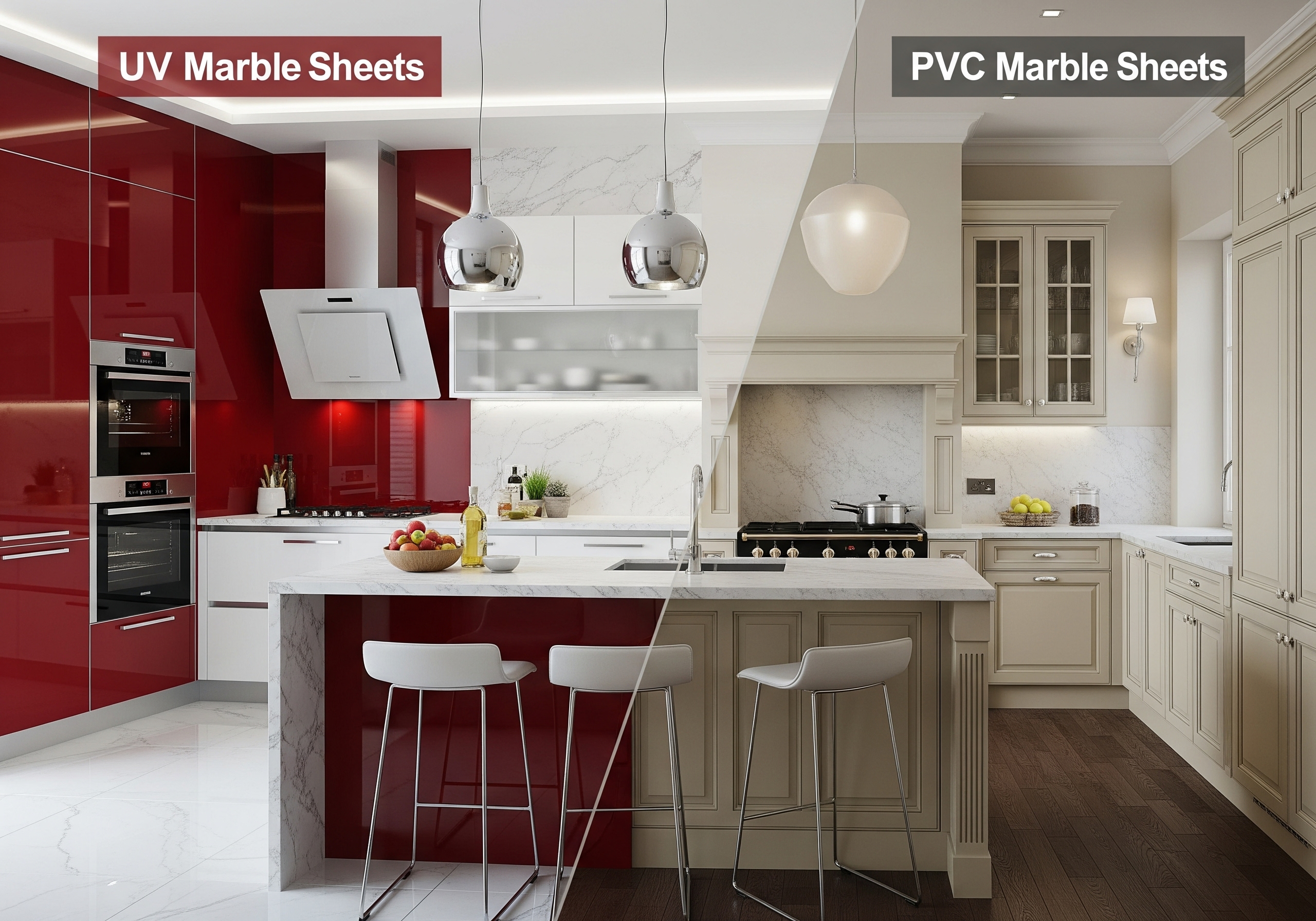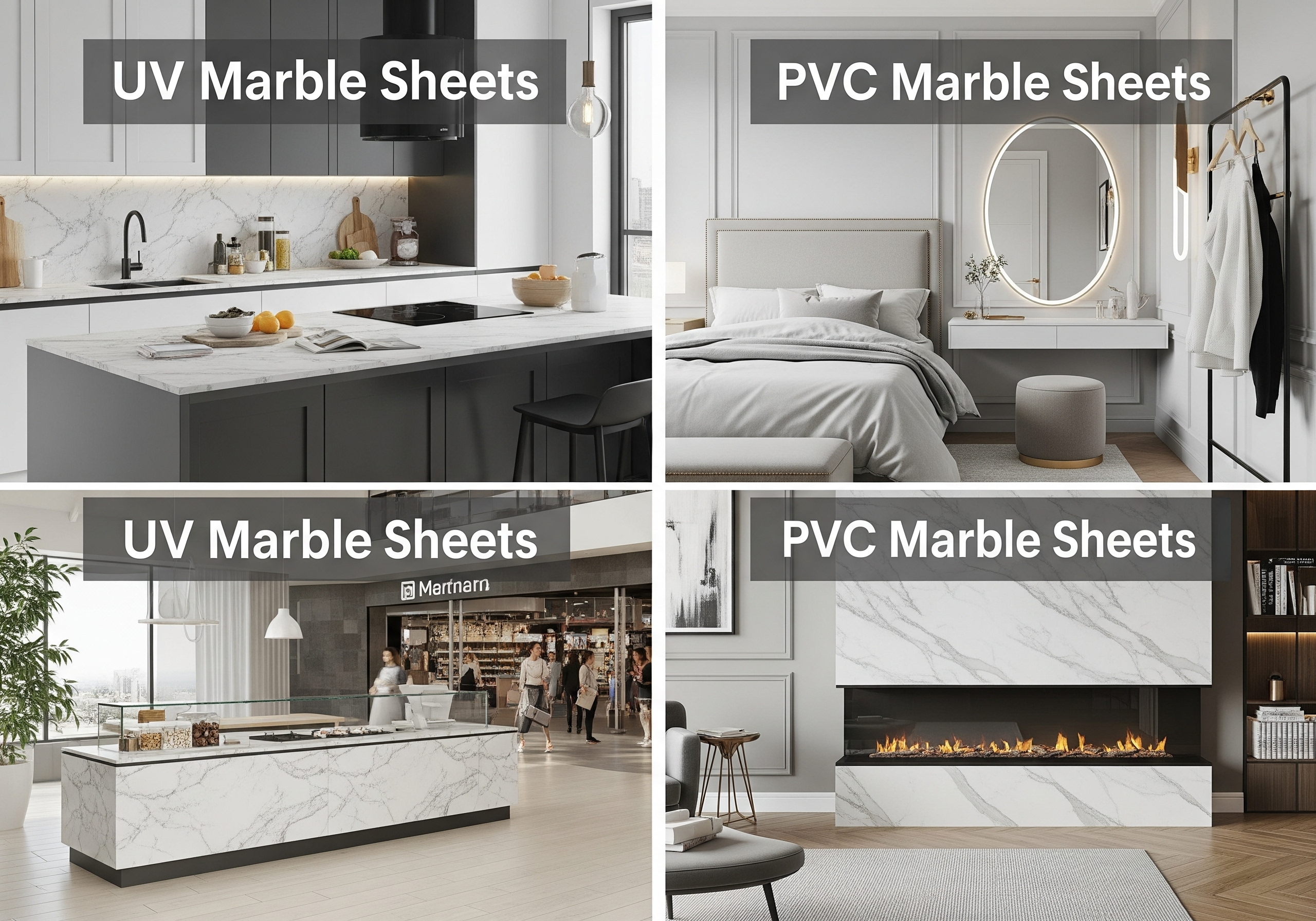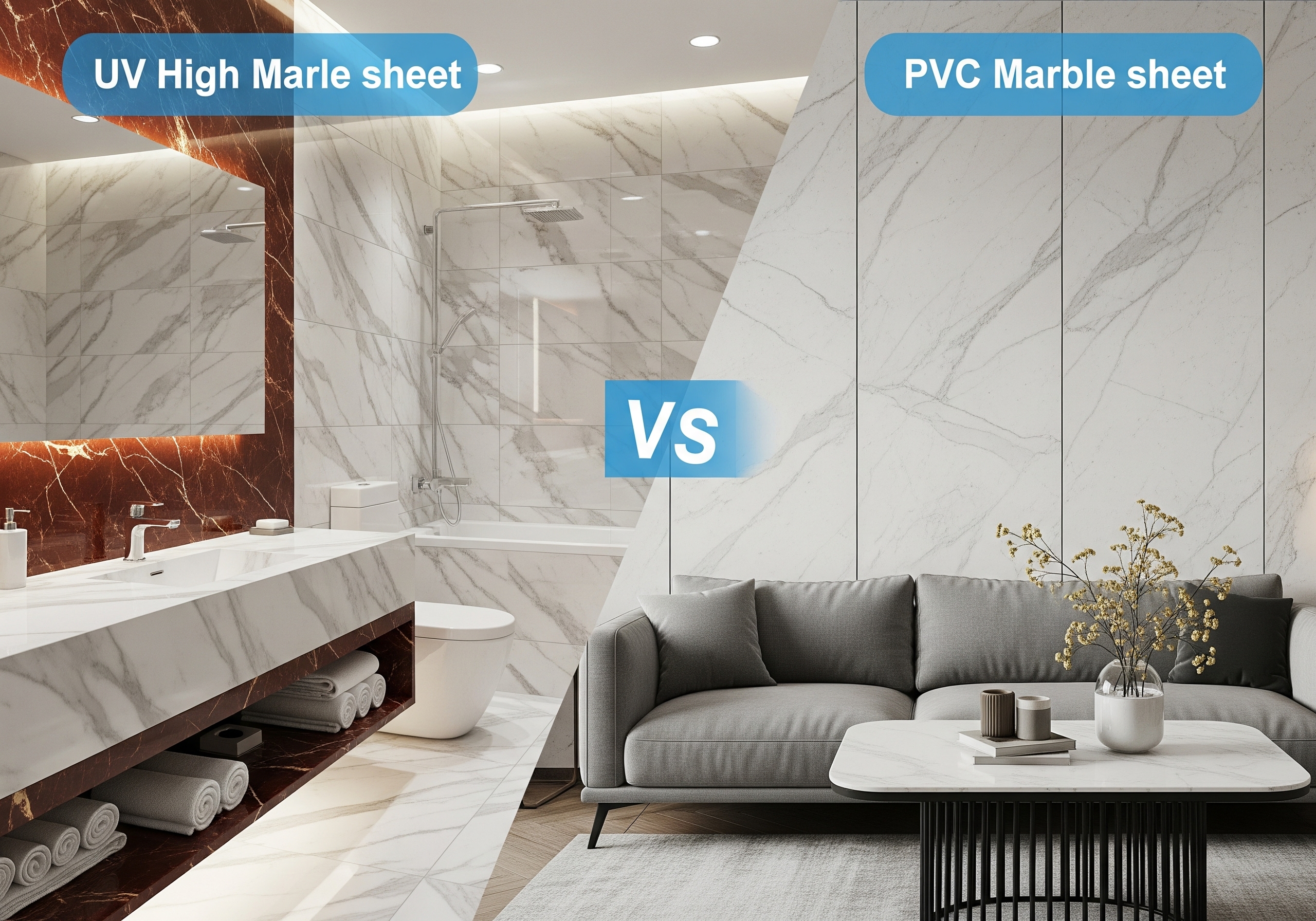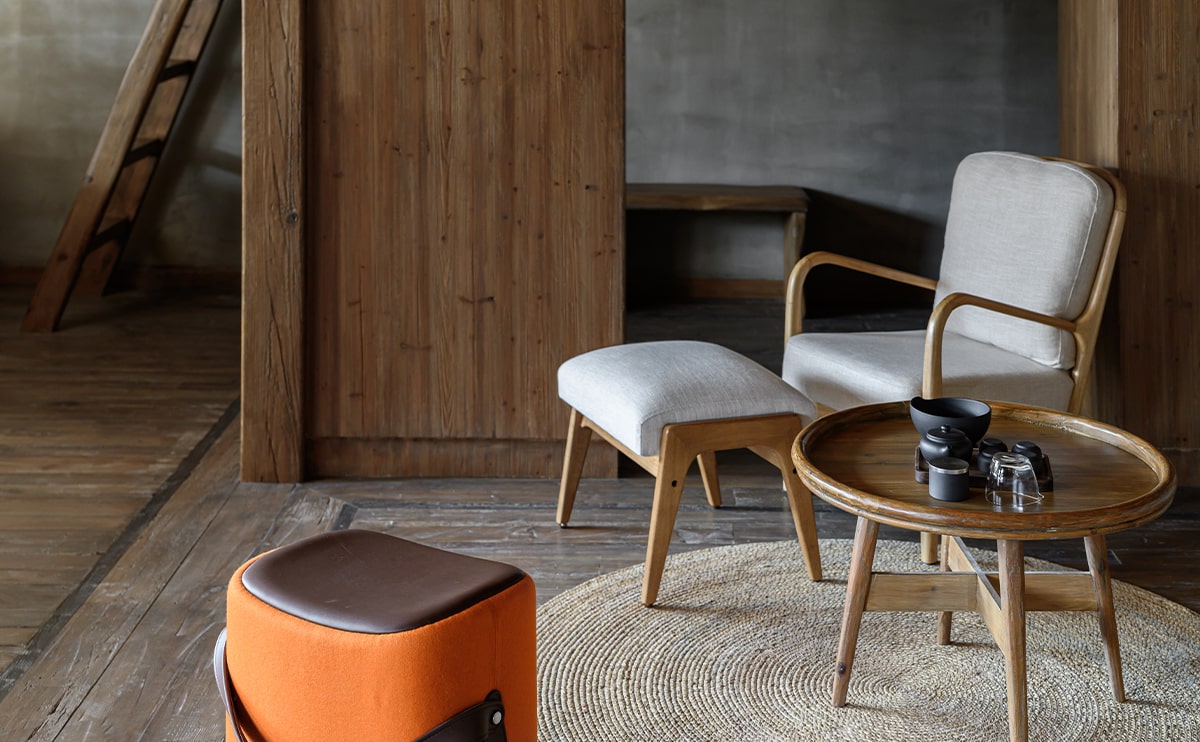UV Marble Sheets vs PVC Marble Sheets: Features and Applications Compared
When planning an interior renovation, choosing the right wall or ceiling cladding is key — not just for looks, but also for durability, cost, and upkeep. If you’re comparing marble sheets like UV and PVC options, you might be wondering: what’s the real difference, and which one’s right for your space?
Both mimic natural marble but differ in material, finish, and performance. In short, UV marble sheets offer better durability and shine for humid or high-traffic areas, while PVC sheets are lightweight and cost-effective for dry, low-use interiors.
In this guide, we’ll compare their features side by side — from appearance and installation to lifespan and best-use scenarios — so you can make a confident, informed decision. Or visit Emu Design Build to explore the full range of styles and finishes.
What Are UV Marble Sheets and PVC Marble Sheets?
| Feature | PVC Marble Sheet | UV Marble Sheet |
| Material Composition | Polyvinyl chloride (PVC) base | PVC base + UV-cured top coating |
| Surface Finish | Matte or low-gloss | High-gloss, reflective finish |
| Scratch Resistance | Moderate | High |
| Moisture Resistance | Good | Excellent (better suited for humid environments) |
| Durability (General Use) | 7–10 years (typical) | 10–15 years (with proper care) |
| Weight | Lightweight | Slightly heavier due to coating |
| Cost | Lower | Slightly higher |
| Ideal Applications | Interior walls, ceilings (dry areas) | High-traffic areas, kitchens, bathrooms |
| Maintenance Needs | Low | Very low |
| Aesthetic Appeal | Imitates marble, but with simpler look | More vibrant, high-end marble appearance |
Core Differences Between UV and PVC Marble Sheets
When comparing UV marble sheets and PVC marble sheets, understanding their core differences helps homeowners and designers make informed decisions. Below is a straightforward comparison based on key performance and practical factors:
| Feature | UV Marble Sheets | PVC Marble Sheets |
| Material Composition | PVC base with a UV-cured top coating | Solid PVC with printed film and laminated coating |
| Surface Finish | Glossy, mirror-like finish with high reflectivity | Satin to semi-gloss, slightly less reflective |
| Weight | Slightly heavier due to additional coating | Lighter and easier to handle during installation |
| Durability | Highly scratch- and fade-resistant | Durable under normal use but prone to surface wear |
| UV Resistance | Excellent – resists yellowing and fading under sunlight | Moderate – may fade or yellow over time in direct sunlight |
| Fire & Moisture Resistance | Good fire-retardant and waterproof properties | Also water-resistant and fire-retardant, but slightly less robust |
| Maintenance Needs | Low maintenance – wipe-clean surface | Also low maintenance, but may require more care over time |
In short, UV marble sheets offer enhanced resistance to sunlight and surface damage, making them a better option for bright or semi-outdoor areas. PVC marble sheets, on the other hand, are budget-friendly and lighter, ideal for interior walls and ceilings in dry or moderate environments.
According to CoowinWPC:
UV marble sheets usually have glossy surfaces and vibrant colors due to the UV printing process. On the other hand, PVC sheets are made entirely of polyvinyl chloride with no additional UV coating. These sheets are also durable and resistant to moisture, chemicals, and impact.
Which One Lasts Longer?
When comparing the durability of UV marble sheets and PVC marble sheets, the choice often comes down to where and how they’ll be used—especially in Australia’s varied climate. From humid coastal areas like Brisbane to dry inland zones such as Alice Springs, each material performs differently.
UV marble sheets typically offer a longer lifespan, especially in humid or high-traffic areas. Thanks to their UV-cured top layer, these panels are highly resistant to fading, yellowing, and warping, even when exposed to consistent sunlight or moisture. That makes them ideal for kitchens, bathrooms, and commercial interiors where environmental stress is a concern.
PVC marble sheets, while still durable, tend to fare better in low-moisture, indoor spaces. Over time, especially in sunlit or damp environments, they may begin to show signs of surface wear, discolouration, or minor distortion. However, in dry climates or low-use areas, they can still maintain their appearance for 7 to 10 years with proper care.
In short, if longevity and durability are top priorities—particularly in areas exposed to moisture or UV rays—UV marble sheets clearly have the edge. But for more controlled indoor settings, PVC marble panels remain a reliable, cost-effective option.
Visual Appeal and Interior Styling Options
When it comes to aesthetics and styling, both UV and PVC marble sheets aim to replicate the elegance of natural marble—but they do so with slightly different results.
UV marble sheets have a high-gloss, mirror-like finish that creates a sleek and polished effect. This makes them especially well-suited for modern interiors, such as minimalist kitchens or luxe bathrooms. Their smooth surface enhances light reflection, adding depth to any space. The marble effect interior sheets in this category often come in a wider variety of colours and patterns, closely mimicking real stone textures.
In contrast, PVC marble sheets tend to have a matte or low-gloss finish, giving them a subtler, softer appearance. These decorative wall panels work well in classic or traditional designs, where a more understated marble look is preferred. While the range of colours and finishes is slightly narrower, they still offer enough variety for most interior themes.
In terms of visual realism and finish quality, comparing UV marble sheets and PVC marble sheets clearly shows UV options offer a more premium, vibrant appearance—ideal when the goal is to make a bold design statement.

Installing and Maintaining UV vs PVC Marble Sheets
For many Australian homeowners and renovators, ease of installation is a key factor when comparing UV marble sheets and PVC marble sheets.
PVC marble sheets are notably lighter and easier to cut, making them a favourite for DIY projects. With just basic tools like a utility knife, straight edge, and adhesive, many homeowners can handle wall or ceiling installations themselves—particularly in bedrooms or living areas. Transporting and handling these panels is also simpler due to their lightweight construction.
UV marble sheets, while still manageable, are slightly heavier because of the extra coating. Cutting them may require a fine-tooth saw or circular blade, and while some experienced DIYers can take it on, professional installation is often recommended—especially in kitchens, bathrooms, or commercial areas where precision and finish quality matter.
In terms of maintenance, both types offer low-effort cleaning. A soft cloth with mild detergent or a diluted vinegar solution is typically enough. Avoid abrasive sponges or harsh chemicals that could dull the finish over time.
If the space involves moisture-prone surfaces or intricate cuts around fixtures, it’s wise to consult a professional installer to ensure a durable and neat result.

Price & Value: UV vs PVC Marble Sheets
In terms of cost, PVC marble sheets are more budget-friendly, typically priced at £25–£45 per m². They’re ideal for low-impact areas like bedrooms or ceilings where affordability matters most.
UV marble sheets cost more—around £40–£70 per m²—but offer better durability, especially in kitchens, bathrooms, or high-traffic spaces. While the upfront price is higher, they provide greater long-term value thanks to their premium finish and resilience.
If you’re after a cost-effective marble sheet for light-use areas, PVC is a smart choice. For lasting quality and visual impact, UV panels are worth the extra spend.
Best Use Cases: Comparing UV Marble Sheets and PVC Marble Sheets
Choosing between UV and PVC marble sheets often depends on where and how they’ll be used.
UV marble sheets are ideal for:
- Kitchens and bathrooms (thanks to high moisture resistance)
- Commercial spaces and hallways with heavy foot traffic
- Coastal homes where sun and humidity are common
PVC marble sheets work best in:
- Bedrooms, living rooms, or rental properties
- Ceilings or decorative features in dry, low-use areas
- Projects with tight budgets needing cost-effective wall panels
In short, UV panels suit demanding environments, while PVC sheets are great for general interior use.

Final Thoughts: Which One Should You Choose?
When comparing UV marble sheets and PVC marble sheets, there’s no one-size-fits-all answer—it truly depends on your space, budget, and design goals.
If you’re renovating wet areas like bathrooms, working with high-traffic zones, or want a glossy, premium finish, UV marble sheets offer greater long-term value. On the other hand, for dry interiors, rental properties, or projects where cost is a priority, PVC marble sheets deliver a stylish result without stretching your budget.
To explore more options and see how each type might look in your space, browse the full range of marble sheet choices at emudesignbuild. Seeing real samples can help you confidently decide what’s right for your home or project.


